
Fertilizer Technical Working Groups Provide Key Insights into Africa’s Fertilizer Sector
Between June 2021 and September 2022, Development Gateway: An IREX Venture’s (DG’s) Visualizing Insights on Fertilizer for African Agriculture (VIFAA) program and Africa Fertilizer (AFO)—an initiative of the International Fertilizer Development Center (IFDC)—convened 12 Fertilizer Technical Working Groups (FTWGs) in 14 countries which have yielded essential information on Africa’s fertilizer sector, including insights on how geopolitical events have impacted the fertilizer sector and what is needed to mitigate resulting threats to food security throughout Africa.
What is the VIFAA Program?
Sub-Saharan Africa (SSA) has the lowest fertilizer usage in the world. The fertilizer usage is at levels that are insufficient to replace soil nutrients lost every year in crop production. Simultaneously, SSA’s population is growing steadily, with a projected population size of more than 2 billion people by 2050. This demographic shift has resulted in an increased need for policymakers to make decisions that lead to strong agricultural supply chains and increased food security.
Through the VIFAA program, DG, AFO, and Wallace & Associates are working to advance food security throughout Africa by collaborating with industry sector actors at national levels to validate country-specific fertilizer data that acts as a trustworthy source and is aggregated on the AFO website. This country-specific data supports stakeholders in making decisions that help ensure sufficient quantities and appropriate types of fertilizer reach farmers in time for planting—thus, improving food security.
What is a FTWG?
A vital part of the VIFAA program is assembling stakeholders throughout the fertilizer sector in a given country. These gatherings, called FTWGs, provide key fertilizer data across different indicators, validate the data being collected, and provide key information on how to improve the fertilizer data ecosystem. In FTWGs, a variety of actors from the private sector, government, and academia come together to validate fertilizer data. This data includes the types and volumes of fertilizer that is domestically produced, imported, and exported.
Because data is validated collaboratively and unanimously in FTWGs, stakeholders and the public are more likely to trust the data. In turn, this data:
- Indicates the country’s inventory level as well as its ability to and the timeline for sourcing fertilizer from global markets;
- Helps stakeholders identify what key data templates (e.g., cropland mapping, Fertilizer Use By Crop [FUBC] analysis, retail prices, and cost build up) are needed; and
- Supports key actors in identifying steps needed for deeper and targeted user engagement going forward.
Once validated, this data is used to develop country dashboards and added to AFO’s website, which allows for easy access to everyone working in the fertilizer sector.
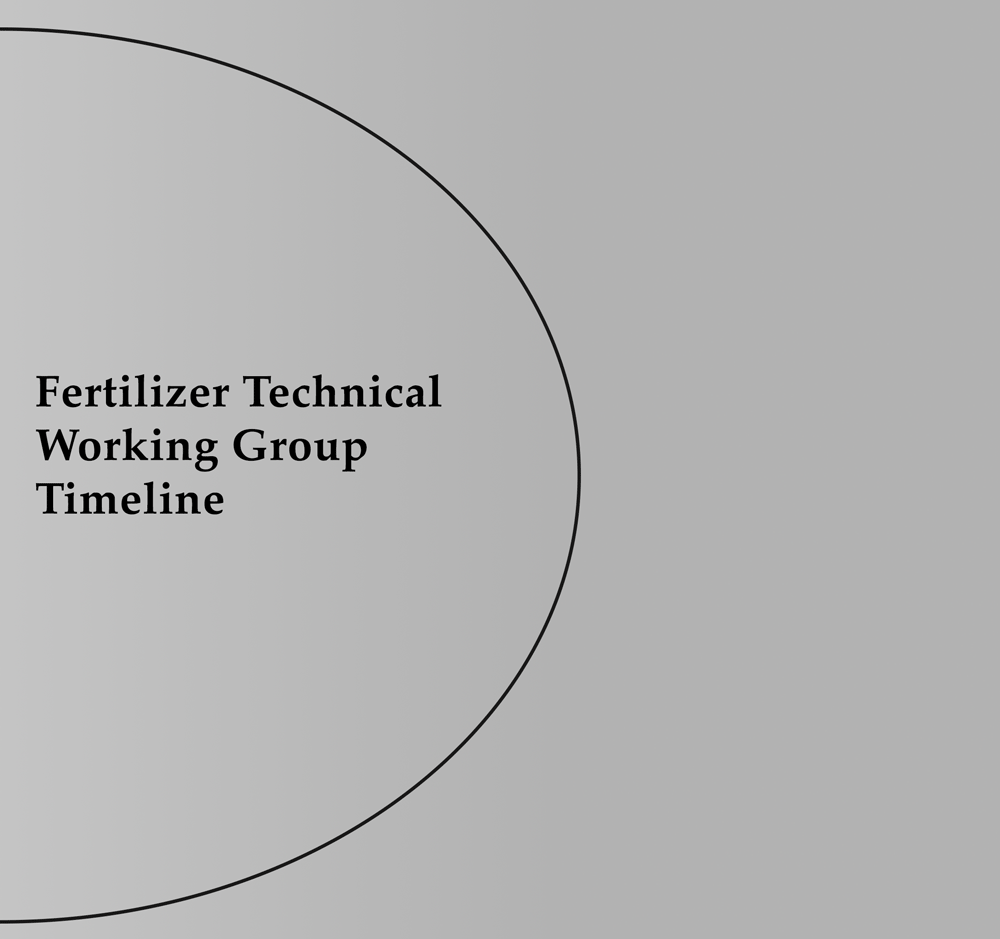
Insights on the Fertilizer Sector from FTWGs
Throughout the 2021 and 2022 FTWGs, several insights came to light regarding the state of the fertilizer supply chain as well as the fertilizer data ecosystem which are outlined below.
What does the fertilizer supply chain need?
The COVID-19 pandemic, subsequent disruptions to the value/supply chains, and the resulting high input prices on fertilizer put added strain on the fertilizer production ecosystem. In order to protect food security, increased investment in the sector is needed to fortify the system against such disruptions and ensure that appropriate fertilizers are in supply and reach farmers in time for the planting season.
Specifically, it’s already been shown that the price increases in 2021 negatively impacted apparent consumption of fertilizer throughout markets in SSA, meaning that the world’s most industrialized countries continue to grow their market share and control crop output and agricultural fossil fuel consumption. This dynamic leaves little place for farming in SSA, particularly among poorer families, resulting in lengthy and severe food and employment crises, particularly in rural Africa.
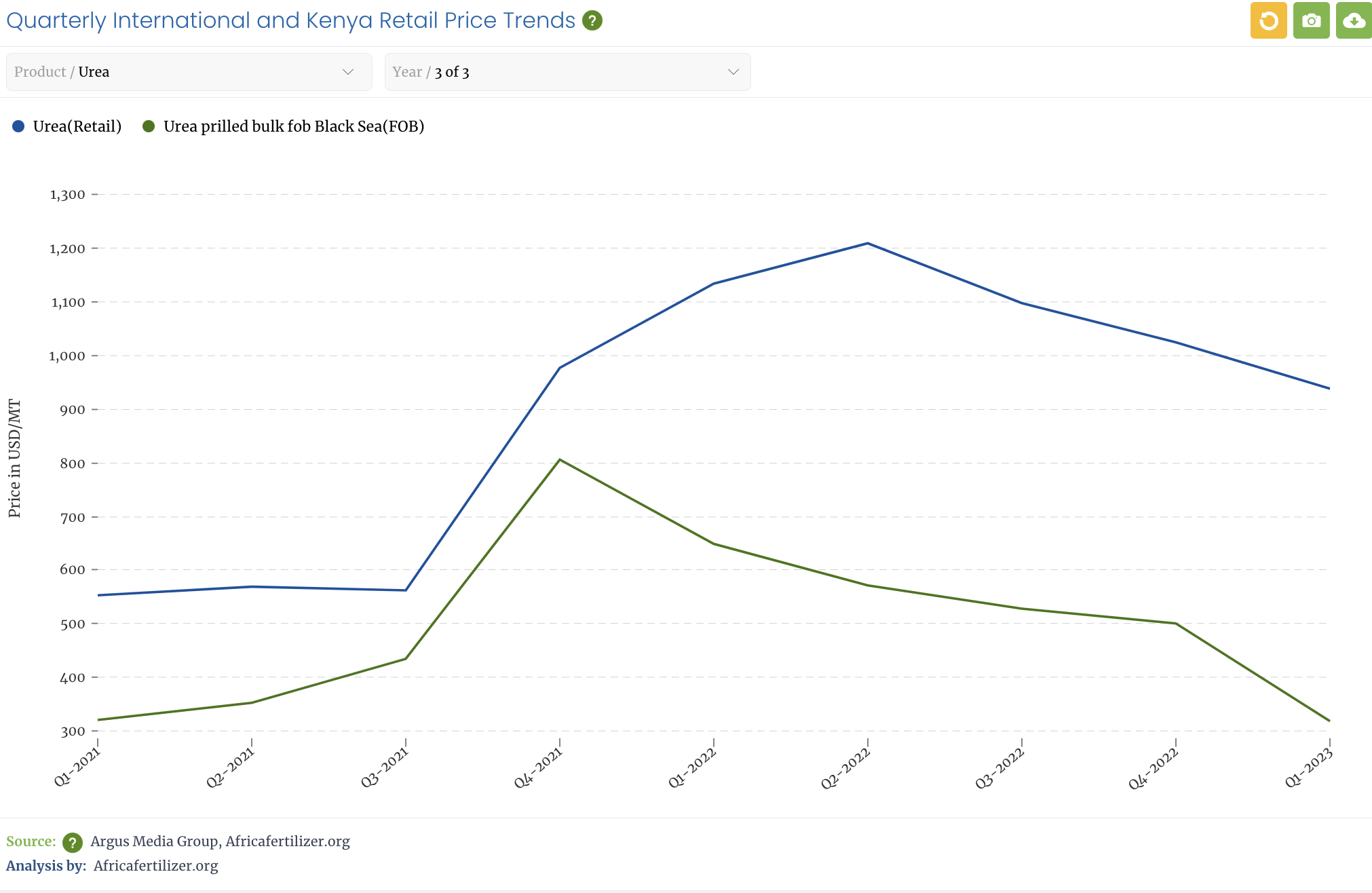
Additionally, the increased prices and foreign exchange volatility have affected private sector businesses in some countries, because suppliers are requesting full payment before supplies are made and are still experiencing issues with timely delivery of products.
Dive Deeper: Impact on Private Sector
During the COVID-19 pandemic, most countries suffered because the private sector was accustomed to buying on credit and paying later. Still, during that time, manufacturers were willing to sell to companies with ready cash rather than on credit. Currently, although prices are high, most companies have been buying only a little because they do not want to put themselves at risk for profit loss since farmers are not buying as much fertilizer as in the past (due to high prices).
Some countries like Ghana, Malawi, Zambia, and Rwanda are doing subsidy programs to reduce the price, but it is still high for some farmers since they are not used to these prices.

What does the fertilizer data ecosystem need?
Improved methodology is needed for the collection of country-level retail data across all SSA countries. A more refined methodology could increase stakeholders’ trust in the quality of the data. Trust would be increased even more if this new methodology is made publicly available. Once a new methodology is available, countries throughout SSA could employ it, creating a more robust and more trusted data ecosystem.
Specific recommendations for improving the methodology are:
- Review the sampling methodology. Ensure that its representative of the agriculture dealers in each county;
- Cover the entire national territory, especially the agricultural regions; and
- Engage other local research institutions to validate the research methodology before going back to the field to collect retail data.
Address data gaps in the fertilizer markets, including gathering information on:
- Fertilizer cost build-up (CBU) includes all costs associated with the provision of fertilizers from bagging, freight, insurance to clearing, warehousing, etc. Private stakeholders and governments add up these costs to estimate the cost of fertilizer, and this data informs such things as spending in governmental subsidy programs. This information can be used to optimize fertilizer costs and reduce fertilizer prices at the farm gate through better planning, simplified logistics, negotiation etc.;

- Country-specific information on FUBC through improved arable land under production estimates;
- Disaggregating national-level data;
- Cropland mapping data, in order to ensure there is comprehensive data on SSA’s cropland;
- Seasonal analysis of retail-level data, so that governments know the carryover stocks and leakages. This knowledge helps governments report on more “real” estimates of consumption over the season;
- Analysis on the impact of government policy interventions, including on policies related to subsidies and the blending market; and
- Identifying all the players in local fertilizer markets, what quantities of fertilizer they produce, and how much fertilizer is used locally and how much is exported.
Increase frequency in updating retail prices during this period in which fertilizer prices are increasing on a daily basis. Throughout the FTWGs, stakeholders mentioned that fertilizer invoices are now valid for only one day since the prices increase so frequently. Stakeholders requested that weekly prices be provided on the AFO website, as monthly average prices data come too late to inform decision-making.
Next steps
While new data collection is not a central focus of the VIFFA program, some decision-making processes may require data that currently needs to be created. Therefore, simultaneous to developing dashboards using existing data, the VIFAA program will also work to identify and fill priority data gaps. VIFAA will respond to and learn from new methods to collect or analyze critical data on fertilizer price, use, availability, quality, or policy. For example, data investments may include innovations in calculating FUBC through improved arable land under production estimates and disaggregating national-level data.
VIFAA will also explore different approaches and partnerships for filling these data gaps, including:
- Supporting our partner AFO to collect new data or improve its methods for collecting existing data, for example, through FTWGs; and
- Facilitating data sharing agreements among the government (e.g., Memorandums of Understanding [MOUs] between ministries) and the private sector (e.g., contributing data to the warehouse to be anonymized/aggregated).
Share
Recent Posts

Why Africa Will Define the Next Decade of Digital Public Infrastructure
As the global conversation shifts from frameworks to delivery, this blog reflects on why Africa will define the next decade of Digital Public Infrastructure (DPI), drawing on insights from the Global DPI Summit and years of on-the-ground experience.

Building Useful & Usable AI: A New Tool to Curb Procurement Corruption
DG, together with Accountability Lab, have launched a new AI-powered contract summary and analysis tool through the HackCorruption program, designed to help journalists, civil society, and the private sector detect red flags in procurement processes.
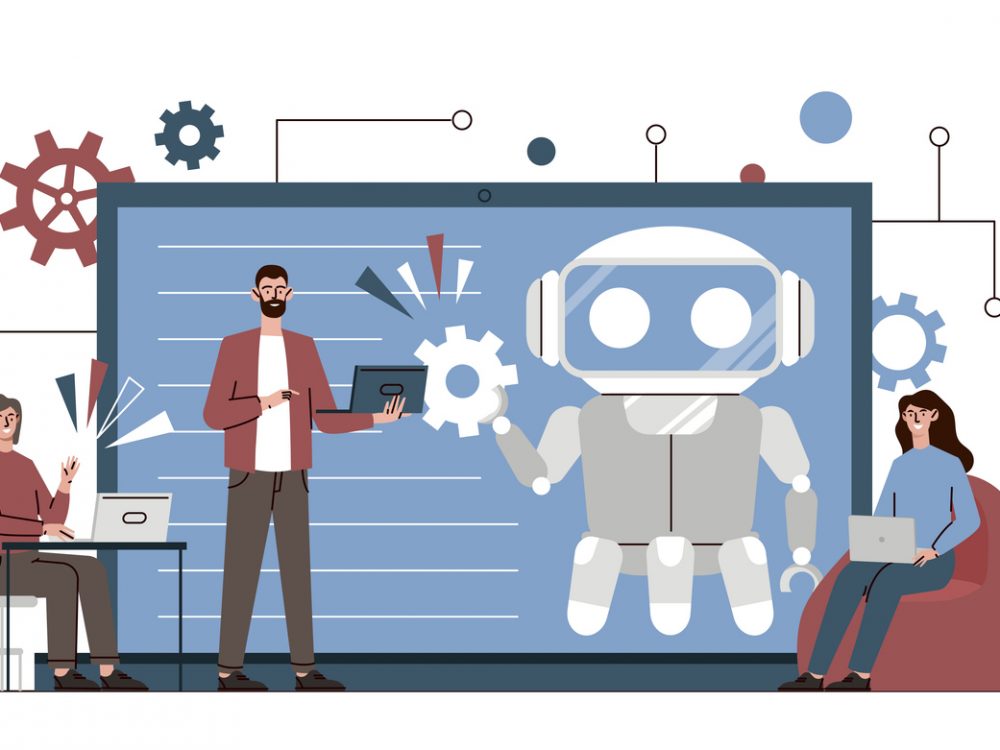
Accelerating Institutions: How DG’s 25 Years Create Unique Value for AI
As AI reshapes the digital landscape, we share in this blog DG’s approach to helping institutions adopt it effectively using clear use cases, strong data foundations, and decades of experience to cut through hype and prioritize ethical, sustainable impact.
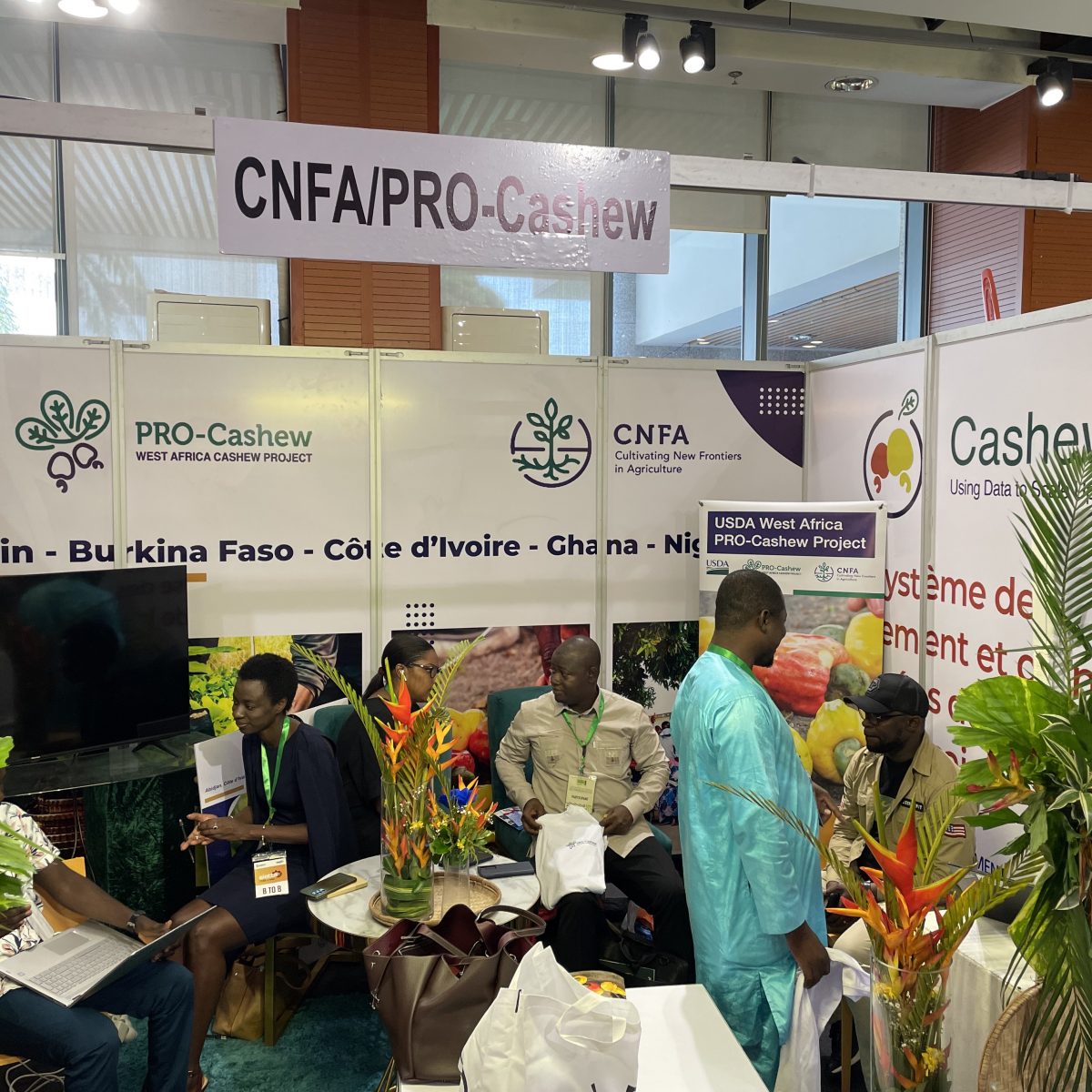
The Cashew-IN Platform: An Assessment of the Cashew Sectors in Five Countries (Part 2)
In order for cashew farmers, producers, processors, and other stakeholders in the West African cashew sector to increase profits, reduce loss, and improve global competitiveness, comprehensive and reliable data is required. Development Gateway: An IREX Venture (DG) partnered with Cultivating New Frontiers in Agriculture (CNFA) under the USDA West Africa PRO-Cashew project in order to develop the Cashew-IN program to address this need.
In the first part of this blog series, we discussed the CALM assessment of the cashew data ecosystem, key findings from the assessment, and how DG is using the findings as well as partner and stakeholder feedback to guide the development of the Cashew-IN platform, a website that will facilitate access to and use of data to improve decision-making for policymakers, farmers, and the private sector.
In this blog, we will look at the indicators on the Cashew-IN platform and what the data is telling us about the cashew sector more broadly.
What will the Cashew-IN Platform Do?
The Cashew-IN platform is currently being developed by DG and will include data on the cashew sector in the five implementing countries: Côte d’Ivoire, Benin, Burkina Faso, Ghana, and Nigeria (referred to as the Cashew-IN countries below).
Some stakeholders interviewed after the launch of the prototype in December 2021 and during the various interactions (i.e., user feedback sessions, platform presentation, etc.) reiterated the crucial role of the Cashew–IN platform. According to responses given during the stakeholder interviews, some actors will use the platform to help to foster a better culture of statistical data production and dissemination and others will use it to raise awareness, guide, and influence decision-making of cashew stakeholders (such as researchers, producers, traders, and policy-makers) who are working within the production, processing, marketing, and consumption sectors.
Data and information generated from the platform can also support decisions of member states on policy issues as well as public and private actors to increase and secure investments in the sector.
What Does the Cashew-IN Platform Include?
Key informants and co-design workshop participants agreed on three themes to include in the Cashew-IN platform: production, processing, and trade. Participants also expressed specific and detailed data needs for each theme, which were similar across the five Cashew-IN countries with small country-specific differences:
- At the production level: participants articulated data needs around several themes including research studies, good agricultural practices, production costs, access to land, access to agro-processing supplies, and phytosanitary treatments;
- At the trade level: the data needs are the publication of international markets import-export statistics, information on national and international demand, processing countries customs statistics, and best practices from different cashew producing countries as well as current standards impacting the different cashew markets;
- At the processing level: in addition to locating the different processing units with the Cashew-IN countries, knowledge of almond grades, technological innovations and requirements to access international markets are needed, as expressed by workshop participants ; and
- Other identified needs include a national directory of service providers across the value chain, information related funding opportunities, organization of the cashew sector in each country of implementation, and women’s involvement in the sector.
The software development team included the following aspects in the design and the conception of the Cashew-IN platform:
- The platform is in English and French. Each country’s official language will be the default language, although users can switch languages at any time using the toggle available in the platform’s interface.
- The platform will accept indicator data from 2015 onwards for users to get familiar with the platform’s charts and graphs that display indicator progress over time.
- A data entry and/or update can be done directly from the user interface or by uploading Excel worksheets in the platform.
- All charts, graphs, tables, and maps will display the official source of the data being shown. This information will be embedded in all download functionalities.
- The platform supports two user modes: an authenticated mode for all users designated to enter and/or update data in the platform and a public user mode for general users to access the Cashew-IN public interface and associated content.
- Several user profiles have been configured for authenticated users to streamline the information flow while promoting and supporting national data ownership and appropriation. These user profiles include:
- System administrator (SA): the user responsible for the overall platform settings and maintenance with read-only access to country data;
- Country administrator (CA): the user responsible for country data management with full access rights to country data and country specific parameters and settings, including users management; and
- Focal point (FP): the user responsible for data entry and/or update. Each FP will have to be officially designated by their responsible organization and will only be entitled to enter and/or update data pertaining to their organization.
Additional profiles and/or data management rules (e.g., data review and validation) can be configured as needed for each of the Cashew-IN countries.
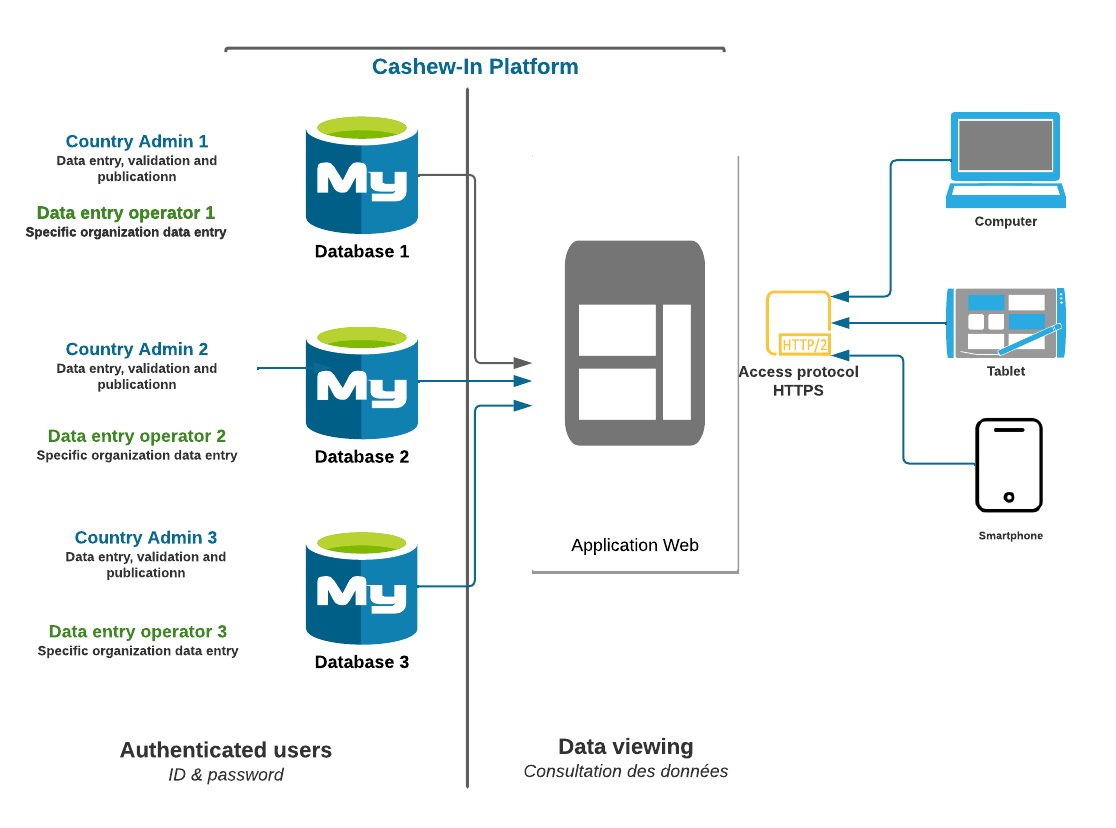
Lessons Learned During the Data Ecosystem Assessment and Stakeholder Engagement
Throughout the implementation, the DG team learned several lessons related to the need for the Cashew-IN platform to be consistent with national policies and the importance of engaging national partners from the start of the project.
More specifically, DG learned the importance of tailoring the Cashew-IN platform to meet the country’s national data disclosure framework and that the data included on the platform needs to remain the property of the original source. Implementing this approach helped to alleviate stakeholder concerns regarding the management and confidentiality of their data.
DG also learned the importance of transparency, specifically we identified the need to ensure national stakeholders are included in the development of a new tool, beginning at the assessment phase of the project. Additionally, DG found that stakeholders engagement early in the project led to deepened buy-in and commitment to sharing data needed on the Cashew-IN platform.
Next Steps
The technical development of the Cashew-IN platform is currently ongoing with the addition of further pages and features on trade and processing. One of the key activities in 2023 will be adding regional and country-specific data to the Cashew-IN platform.
To learn more about how stakeholders will use the platform, check out our blogs: Voices of the Cashew Sector.
Share
Recent Posts

Why Africa Will Define the Next Decade of Digital Public Infrastructure
As the global conversation shifts from frameworks to delivery, this blog reflects on why Africa will define the next decade of Digital Public Infrastructure (DPI), drawing on insights from the Global DPI Summit and years of on-the-ground experience.

Building Useful & Usable AI: A New Tool to Curb Procurement Corruption
DG, together with Accountability Lab, have launched a new AI-powered contract summary and analysis tool through the HackCorruption program, designed to help journalists, civil society, and the private sector detect red flags in procurement processes.

Accelerating Institutions: How DG’s 25 Years Create Unique Value for AI
As AI reshapes the digital landscape, we share in this blog DG’s approach to helping institutions adopt it effectively using clear use cases, strong data foundations, and decades of experience to cut through hype and prioritize ethical, sustainable impact.
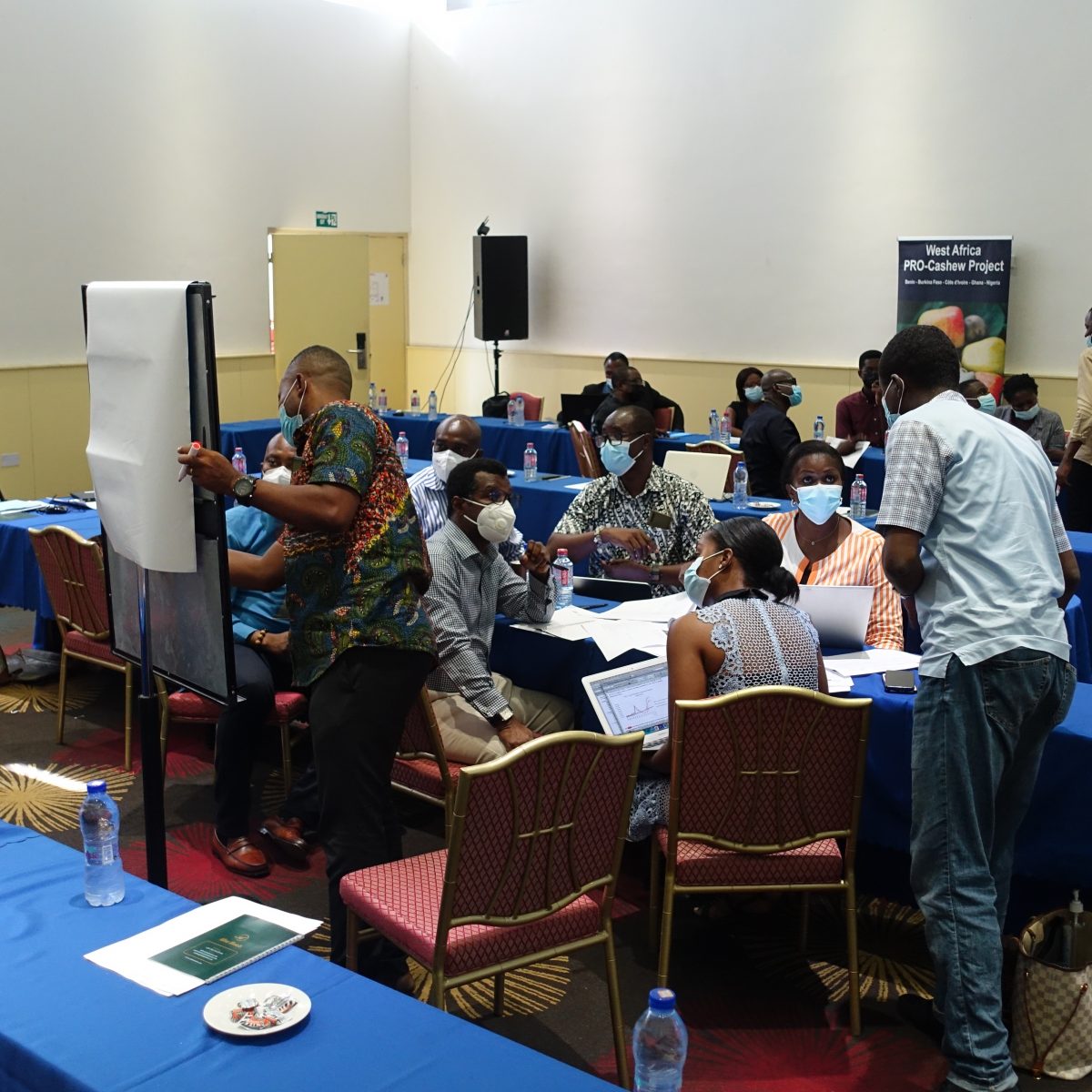
The Cashew-IN Platform: A Deep Dive on Designing to Meet Stakeholder Needs (Part 1)
Comprehensive and reliable data is required in order for cashew farmers, producers, processors, and other stakeholders in the West African cashew sector to increase profits, reduce loss, and improve global competitiveness. Development Gateway: An IREX Venture (DG) has partnered with Cultivating New Frontiers in Agriculture (CNFA) under the USDA West Africa PRO-Cashew project to develop the Cashew-IN program in order to address this need.
The Cashew-IN program, which started in 2020, conducted a landscape assessment of the data in the cashew sectors of five countries: Côte d’Ivoire, Benin, Burkina Faso, Ghana, and Nigeria (referred to as the Cashew-IN countries below). The assessment findings will inform the Cashew-IN platform, a multi-country cashew data management system that the program is developing to facilitate use of data in order to improve decision-making for policymakers, farmers, and the private sector. In this blog (part 1 of 2), we explore the assessment process, findings, and how stakeholders plan to use the platform.
Starting the Cashew-IN Program: the CALM Assessment
The Cashew-IN program first identified gaps in the collection, storage, usage, and dissemination of cashew data. Currently, the program is addressing these gaps by developing the Cashew-IN platform. The ultimate goal is to generate better market outcomes for cashew nuts in the Cashew-IN countries.
At the commencement of the program activities, DG conducted the Custom Assessment Landscape Methodology (CALM) assessment that included:
- A desk review of existing documentation on the cashew sector in West Africa and in program implementing countries;
- A web-based survey of cashew producers, government agencies, development partners, civil society, and private sector actors that highlighted the main challenges in the cashew sector, including access to credit, processing, and access to reliable information and technology; and
- Targeted key informant interviews (KIIs) to dive deeper into the decision-making processes and data priorities of individual stakeholders.
These mixed methods aimed to better understand the cashew value chain challenges and identify the information needs of farmers, policymakers, and the private sector. Overall, the findings show that stakeholders understand the importance of reliable data in the cashew sector and are able to define the types of data and information that could be useful for their activities.
Identifying Needs: The State of the Cashew Data Ecosystem
The CALM assessment found that the Cashew-IN countries collect data according to their needs and capacity, and the majority of survey respondents expressed similar data needs across countries. These macro-level findings and needs that were identified through the CALM assessment include:
- Accessibility concerns: Data and information is often publicly unavailable, despite having been collected in some countries. For example, while cashew data is collected at the farm level or through farmer associations, data is not published or readily available to stakeholders, except through reports submitted for official use or through paid subscriptions. The use of data is also curtailed because of limited data analysis capabilities;
- Processing level data missing: The processing level of the supply chain is the step that lacks the most data mainly due to its sensitivity with regards to private corporations’ economic interests; and
- Standardize producer data: There is a need to standardize data collection from the producers and facilitate its transmission in order to complement the other data sets that are available throughout the value chain.
Developing the Cashew-IN Platform: Collaborating Closely with National Partners
During and after the CALM assessment was completed, national stakeholders were included and engaged in the assessment and validating its findings. Engaging and empowering national partners is an essential element in DG’s collaborative development approach. Our national partners provided key insights throughout this process, including through their commitment to sharing relevant data that will be included on the Cashew-IN platform.
One partner with whom we’ve engaged throughout this process is Roland Oroh, the Director of the Nigeria Agribusiness Register. I (Aminata Camara Badji) discussed the Cashew-IN platform and the state of the cashew sector with Roland in summer 2021. Roland discussed how he envisioned using the Cashew-IN platform and what kind of decisions he could make using the data on the platform. Check out our conversation below and stay tuned for more about the Cashew-IN program and platform!
Share
Recent Posts

Why Africa Will Define the Next Decade of Digital Public Infrastructure
As the global conversation shifts from frameworks to delivery, this blog reflects on why Africa will define the next decade of Digital Public Infrastructure (DPI), drawing on insights from the Global DPI Summit and years of on-the-ground experience.

Building Useful & Usable AI: A New Tool to Curb Procurement Corruption
DG, together with Accountability Lab, have launched a new AI-powered contract summary and analysis tool through the HackCorruption program, designed to help journalists, civil society, and the private sector detect red flags in procurement processes.

Accelerating Institutions: How DG’s 25 Years Create Unique Value for AI
As AI reshapes the digital landscape, we share in this blog DG’s approach to helping institutions adopt it effectively using clear use cases, strong data foundations, and decades of experience to cut through hype and prioritize ethical, sustainable impact.
Advancing Tobacco Control in Kenya: The Tobacco Control Data Initiative (TCDI) Website
In partnership with Kenya’s Ministry of Health, through the Division of Tobacco Control, Development Gateway: An IREX Venture (DG) started creating the Tobacco Control Data Initiative (TCDI) Kenya dashboard (kenya.tobaccocontroldata.org) in 2021. The dashboard will be launched in Nairobi, Kenya on April 19, 2023. This is a “one-stop shop” to access the relevant data that Kenya’s policymakers need to advance tobacco control implementation. The dashboard is one of several country-specific platforms that DG designed in collaboration with University of Cape Town’s Research Unit on the Economics of Excisable Products (REEP).
In addition to Kenya’s dashboard, TCDI country dashboards exist for South Africa, Zambia, Nigeria, and Ethiopia and will soon launch for the Democratic Republic of the Congo. All were developed as part of the TCDI Program that DG implements with support from and in partnership with The Bill & Melinda Gates Foundation.
Each country-specific TCDI dashboard addresses barriers to data use in tobacco control by consolidating available, reliable and evidence-based tobacco control data, identifying and filling data gaps, and creating an online resource for policymakers to access the relevant data needed to adopt and implement tobacco control policies. Specifically, the TCDI Kenya dashboard was created in response to the impending threat of tobacco use in Kenya and the various dangers that accompany it.
Why TCDI?
Tobacco use in Kenya is one of the leading preventable contributors to death and disability from non-communicable diseases (NCDs). In Kenya, NCDs such as cardiovascular diseases, chronic obstructive airway diseases, diabetes, cancers, and renal diseases account for more than 50% of hospital admissions and 39% of all deaths annually (see STEPS 2015). In 2014, more than 11% of Kenyans (2.5 million individuals) aged 15 and older reported using tobacco products. Tobacco use of both smoked and smokeless products was more prevalent among males, at 19.1% (2.0 million users) compared to 4.5% (504,264 users) among females (see GATS 2014). Tobacco use kills approximately 12,000 Kenyans and costs the economy Kshs. 3 billion annually due to healthcare expenditure and indirect costs associated with lost productivity (due to premature morbidity and mortality).
Although tobacco control data does exist for Kenya, the data is from disparate sources and not easily accessible, which presents a challenge for adoption and implementation of tobacco control legislation. Through their research, the TCDI team identified common themes in the data landscape. These relate to concerns about data accuracy, comparability, timeliness, and accessibility. As a result, the TCDI team understands the data needs and gaps, has identified existing data, and developed the TCDI Kenya website that enables decision-makers to use essential data to inform tobacco control policy more effectively.
The TCDI Kenya Dashboard
Together, the partners co-designed a publicly available dashboard (kenya.tobaccocontroldata.org), a website that aims to address key decision-making needs. The dashboard equips stakeholders in government, civil society, academia, and the general public with reliable and up-to-date evidence to promote tobacco control, public health and other disciplines. It draws on both primary and secondary data sources and presents tobacco control information in user-friendly formats such as graphs, infographics, myths and facts, and success stories.
The website will feature seven themes: Tobacco Prevalence, Tobacco Farming, Tobacco Industry Interference, Tobacco Taxation, Tobacco Cessation, Enforcement of Tobacco Control Policies, and the Health Burden of Tobacco Use. The dashboard will be updated with new information as it becomes available over the course of the program and continued implementation of tobacco control in the country.
The Development Process
Before creating the TCDI Kenya dashboard, the TCDI team assessed the existing data and stakeholder needs through hour-long interviews with key members of the tobacco control community. The learnings from the assessment were validated with stakeholders during a workshop on November 19, 2020 before technical development proceeded. The website was created through an agile, co-design process in close consultation with key tobacco control stakeholders in Kenya, including Kenya’s Ministry of Health. (Find the full list of our stakeholders and partners here.) Initial mockups and website designs were shared back with stakeholders for their input and suggestions. As a final step before launching the site, a stakeholder validation workshop was held on March 22, 2023.
Kenya’s Ministry of Health (MOH)
The Ministry of Health’s mission is to build a progressive, responsive, and sustainable healthcare system for accelerated attainment of the highest standard of health to all Kenyans. The Division on Tobacco Control in particular (which has been the main contact point) is designated as the focal point for the implementation of the World Health Organization Framework Convention Tobacco Control (WHO-FCTC), The Protocol to Eliminate Illicit Trade in Tobacco Products (ITP), and the Tobacco Control Act (TCA). The division has also been coordinating the Multi-Sectoral Technical Working groups which implement measures beyond the Ministry of Health, undertaking surveillance and reporting on tobacco control implementation.
Development Gateway: An IREX Venture (DG)
Development Gateway: An IREX Venture provides data and digital solutions for international development. DG creates tools that help institutions collect and analyze information; strengthen the institutional capacity to use data; and explore what processes are needed to enable evidence-based decisions. A mission-driven nonprofit since 2000 with staff based in five global hubs and around the world, DG supports the use of data, technology, and evidence to create more effective, open, and engaging institutions. More at www.developmentgateway.org.
Other Partners
Other partners who have been involved in the dashboard development are the Tobacco Control Board, the County Government of Migori County, Kenya Bureau of Standards (KEBS), National Authority for the Campaign Against Alcohol and Drug Abuse (NACADA), Kenya Medical Research Institute (KEMRI), Kenya National Bureau of Statistics (KNBS), Kenya Revenue Authority (KRA), Ministry of Agriculture, Livestock and Fisheries, Ministry of East African Community and Regional Development, Moi Teaching and Referral Hospital, Den of Hope, Development Hub Consulting Ltd, International Institute for Legislative Affairs (IILA), Kenya Tobacco Control Alliance (KETCA), Kenyatta University, NCD Alliance of Kenya (NCDAK) and the World Health Organization.
We welcome you to visit the dashboard for more information and encourage everyone to use the data therein for necessary action for the advancement of tobacco control in Kenya.
Share
Related Posts

The Cancer-Tobacco Link: Using Data to Drive Stronger Tobacco Control Policies
As we observe World Cancer Day today, it is crucial to recognize the significant role smoking plays in the global cancer epidemic. Tobacco use is the leading preventable cause of cancer and cancer-related deaths worldwide, necessitating a dynamic, multidisciplinary approach to tobacco control interventions. DG’s Tobacco Control Data Initiative (TCDI) contains country-specific websites designed to

Stakeholder, Where Art Thou?: Three Insights on Using Governance Structures to Foster Stakeholder Engagement
Through our Tobacco Control Data Initiative (TCDI) program and its sister program Data on Youth and Tobacco in Africa (DaYTA), we have learned that creating governance structures, such as advisory boards or steering committees, is one approach to ensuring that digital solutions appropriately meet stakeholders’ needs and foster future stakeholder engagement. In this blog, we explore three insights on how governance structures can advance buy-in with individual stakeholders while connecting them to one another.

Raising Awareness on World No Tobacco Day 2024: DaYTA/TCDI’s Work on Tobacco Industry Interference
As tobacco companies have aggressively deployed creative strategies to market retail nicotine and tobacco products at children and adolescents, it is imperative that tobacco control stakeholders have access to timely and high-quality data to inform robust policies, regulations, and enforcement mechanisms.
Announcing Development Gateway: An IREX Venture’s Data on Youth and Tobacco in Africa (DaYTA) Program
Development Gateway: An IREX Venture (DG)—with support from The Bill & Melinda Gates Foundation (BMGF)—is pleased to announce a new program, Data on Youth and Tobacco in Africa (DaYTA). This three-year, $4 million program will advance tobacco control efforts in sub-Saharan Africa (SSA) by addressing data gaps related to tobacco use among 10- to 17-year-olds in Kenya, Nigeria, and the Democratic Republic of the Congo (DRC). Overall, the DaYTA program will empower stakeholders to make timely, data-driven decisions by using evidence to inform policy and, in turn, create a healthier populace in SSA.
A Vulnerable Population: Why We Need Data on Adolescent Tobacco Use
African countries have some of the youngest populations in the world; for example, more than half of the population of Nigeria is under the age of 18.1 Most of the available evidence captures data from 13- to 15-year-olds even though evidence from SSA shows that the age of smoking initiation among young people ranges from as young as 7 years old to about 16 years old.2,3 In countries such as Kenya, among all psychoactive substances, tobacco is the most widely known and readily available and used by those aged 14 years and younger who are in primary school.4 For our three focus countries, the available data is either outdated (2012 for Nigeria5 and 2014 for Kenya6) or doesn’t exist (for DRC), making this data collection a priority for the African tobacco control community.
Additionally, adolescents are especially vulnerable to taking up tobacco use at a young age in some African countries because the tobacco industry aggressively markets to them: advertising near schools and playgrounds, providing free products, and selling youth-oriented flavors in novel tobacco products.
Where are We?: What Data We Know is Missing (so Far)
The lack of data on adolescent tobacco use in African countries limits policymakers’ ability to make data-informed decisions on tobacco control policies. Through the implementation of our Tobacco Control Data Initiative (TCDI) program, DG has become increasingly aware of the limited data on adolescent tobacco use. Three specific types of data that we know to be missing are:
- Data about out-of-school adolescents and females: The Global Youth Tobacco Survey, a predominant source on youth-focused tobacco data, focuses on adolescents who are still in school. This means that data on out-of-school youth is missing and female adolescents tobacco use is likely underrepresented, since the adolescents who are most likely to begin smoking are those who are not enrolled in school and males in urban areas are most likely to be in school (see footnote 7);
- Data on certain age groups: Most of the available data is related to 13- to 15-year-olds. However, studies in SSA show that adolescent tobacco use begins as young as 7 through age 16 (see footnote 8). Therefore, the age of adolescents surveyed needs to be expanded in order to capture more comprehensive data; and
- Tobacco products included in surveys are limited: Cigarettes and smokeless tobacco products are the most commonly surveyed products, despite the rising prevalence of shisha and e-cigarettes. Policymakers will be able to create more robust tobacco control policies and better regulations once these products are included in surveys.
DaYTA: Helping Inform Policy on SSA’s Adolescents

In the initial stage of the DaYTA program, DG will work with stakeholders in Nigeria, Kenya, and the DRC to conduct a rapid assessment to confirm the data gaps and identify what areas need to be prioritized. The assessment findings will be validated in a series of DG-hosted workshops with stakeholders, during which research questions and methodologies for conducting the primary research will be finalized.
After priorities are established, DG will conduct primary research and gather country-level data on tobacco use among adolescents aged 10- to 17-year-olds in all three countries. DG aims to capture data on the following:
- Type, frequency, and quantity of tobacco use;
- Use of novel tobacco products (e.g., electronic nicotine or non-nicotine delivery systems);
- How tobacco products are accessed;
- Lifestyle factors associated with tobacco use (e.g., attending or not attending school, family history of tobacco use, etc.); and
- Any other data gaps identified as a result of the assessment.
Once this data is finalized, it will be integrated into the relevant TCDI Country Dashboards and disseminated to stakeholders.
Stay tuned for more about DaYTA! In the meantime, learn about the TCDI program by following the links below.
TCDI Case Study
TCDI South Africa Dashboard
TCDI Nigeria Dashboard
- National Population Commission (NPC) [Nigeria] and ICF. 2019. Nigeria Demographic and Health Survey 2018. Abuja, Nigeria, and Rockville, Maryland, USA: NPC and ICF.
- Chido-Amajuoyi OG, Fueta P, Mantey D. Age at Smoking Initiation and Prevalence of Cigarette Use Among Youths in Sub-Saharan Africa, 2014-2017. JAMA Network Open. 2021;4(5):e218060. Published 2021 May 3. doi:10.1001/jamanetworkopen.2021.8060.
- Veeranki, S.P., John, R.M., Ibrahim, A. et al. Age of smoking initiation among adolescents in Africa. Int J Public Health 62, 63–72 (2017). https://doi.org/10.1007/s00038-016-0888-7.
- Lelei K, Muteti J. Okioma V, Njenga A. Policy brief on status of drugs and substance abuse among primary school pupils in Kenya. African Journal of Alcohol & Drug Abuse. 2021, 3:26-29.
- Federal Ministry of Health of Nigeria, National Bureau of Statistics, World Health Organization Regional Office for Africa, CDC Foundation, CDC. Global adult tobacco survey: country report 2012. https://extranet.who.int/ncdsmicrodata/index.php/catalog/250/related-materials.
- Ministry of Health Tobacco Control Unit, Kenya National Bureau of Statistics, World Health Organization, CDC Foundation, CDC. Global adult tobacco survey: Fact sheet. 2014. https://www.afro.who.int/sites/default/files/2017-09/gats-kenya-2014-factsheet.pdf.
- Desai, R., Mercken, L. A., Ruiter, R. A., Schepers, J., & Reddy, P. S. (2019). Cigarette smoking and reasons for leaving school among school dropouts in South Africa. BMC public health, 19(1), 1-10.22.
Oyewole, B. K., Animasahun, V. J., & Chapman, H. J. (2018). Tobacco use in Nigerian youth: A systematic review. PloS one, 13(5), e0196362. - Chido-Amajuoyi OG, Fueta P, Mantey D. Age at Smoking Initiation and Prevalence of Cigarette Use Among Youths in Sub-Saharan Africa, 2014-2017. JAMA Network Open. 2021;4(5):e218060. Published 2021 May 3. doi:10.1001/jamanetworkopen.2021.8060.
Veeranki, S.P., John, R.M., Ibrahim, A. et al. Age of smoking initiation among adolescents in Africa. Int J Public Health 62, 63–72 (2017). https://doi.org/10.1007/s00038-016-0888-7.
Share
Recent Posts

Why Africa Will Define the Next Decade of Digital Public Infrastructure
As the global conversation shifts from frameworks to delivery, this blog reflects on why Africa will define the next decade of Digital Public Infrastructure (DPI), drawing on insights from the Global DPI Summit and years of on-the-ground experience.

Building Useful & Usable AI: A New Tool to Curb Procurement Corruption
DG, together with Accountability Lab, have launched a new AI-powered contract summary and analysis tool through the HackCorruption program, designed to help journalists, civil society, and the private sector detect red flags in procurement processes.

Accelerating Institutions: How DG’s 25 Years Create Unique Value for AI
As AI reshapes the digital landscape, we share in this blog DG’s approach to helping institutions adopt it effectively using clear use cases, strong data foundations, and decades of experience to cut through hype and prioritize ethical, sustainable impact.
Les Fonds FODEL : Un appui aux femmes des es communautés minières avec WIM Guinée
Development Gateway : Une filiale d’IREX Venture’s (DG’s) et notre partenaire d’exécution, Women in Mining (WIM) Guinée, ont organisé un atelier de validation dans la région de Boké le 22 octobre 2022 pour présenter et confirmer les résultats d’une enquête conduite par WIM Guinée dans les sous-préfectures minières de Boké et Boffa en avril 2022. Les données collectées visaient à évaluer l’impact des Fonds de Développement Economique Local (FODEL),1 des fonds constitués à partir des contributions financières des sociétés minières et distribués aux communautés touchées par l’activité minière. Les résultats de l’enquête ont révélé certains aspects qui pourraient être améliorés pour permettre aux femmes et aux associations de femmes des communautés minières de mieux capitaliser sur ces fonds et de mieux les utiliser pour soutenir leur développement local.
Mining for data A propos de WIM Guinée et de sa collaboration avec DG Et comment DG travaille-t-elle avec WIM Guinée ?
WIM Guinée est une association professionnelle qui promeut l’autonomisation sociale et économique des femmes du secteur minier en Guinée et en l’Afrique de l’Ouest.
DG a noué son premier partenariat avec WIM Guinée en 2018 pour améliorer la position des femmes dans le secteur minier guinéen, notamment en identifiant et en comblant les lacunes en matière de données autour de l’implication des femmes dans l’exploitation minière et de leur vie dans ces communautés.
L’une des premières initiatives sur lesquelles DG et WIM Guinée se sont associés est l’Indice pilote WIM Guinée, un outil conçu pour comprendre les défis auxquels les femmes sont confrontées dans le secteur minier guinéen et qui limitent leur implication, ainsi que les ressources minières dont elles pourraient bénéficier. (Les résultats de cet indice pilote peuvent être consultés ici).
A travers ce projet, financé par le Fonds Canadien aux Initiatives Locales, DG et WIM Guinée collaborent pour évaluer l’utilisation des fonds du FODEL ainsi que leur impact sur les femmes des sous-préfectures de Boké et Boffa. Ces données seront disponibles sur un site web, créé par la DG, qui sera publié en 2023.
Ce blog détaille certains des premiers résultats de cette étude.
L’histoire de FODEL : Qu’est-ce qu’un fonds FODEL ? Et comment est-il utilisé ?
Le fonds FODEL est un type de prêt accordé par le gouvernement local aux communautés minières. L’administration locale distribue ces fonds après les avoir reçus du gouvernement national, qui les perçoit auprès des sociétés minières à titre de taxes et de redevances.
Les fonds FODEL sont répartis entre les préfectures minières en fonction du niveau d’impact que les communautés ont subi du fait des activités minières. Les fonds du FODEL sont également distribués à des groupes spécifiques au sein de ces communautés. Par exemple, 20 % des fonds reçus au niveau communautaire vont à des projets initiés par des femmes, des projets soutenant les femmes et les jeunes, des entreprises ou des groupes d’intérêt économique (GIE). Globalement, l’objectif des fonds FODEL est de soutenir des activités génératrices de revenus et de développement qui sont incluses dans les plans de développement des communautés.
Afin de mieux soutenir les femmes dans le secteur minier, DG et WIM Guinée ont réalisé une évaluation des défis auxquels les femmes dans le secteur minier étaient confrontées avant, pendant et après avoir reçu des fonds du FODEL. L’évaluation a porté sur environ 700 femmes qui travaillent avec des associations de femmes dans les sous-préfectures de Boké et Boffa.
Ce que nous savons jusqu’à présent : L’atelier d’évaluation et de validation
Sous la supervision de WIM Guinée, huit agents de collecte de données ont administré le questionnaire à un total de 11 communautés – cinq à Boké et six à Boffa.
Les résultats de l’évaluation ont permis de dresser le profil des femmes qui ont reçu des fonds du FODEL dans les deux localités. Ces femmes ont des diplômes d’études secondaires et la plupart d’entre elles s’adonnent à des activités de développement telles que le maraîchage, la pêche, la teinture, la saponification (c’est-à-dire la création de produits à base de savon ou d’alcool à partir de graisses et d’huiles) et la transformation de matières premières (par exemple, le beurre de karité, l’huile de palme, les cultures, etc.)
Les résultats de l’évaluation ont révélé que :
- Les femmes estiment que les FODEL sont bénéfiques pour leurs associations. Cependant, les fonds sont insuffisants pour aider les femmes à atteindre leurs objectifs (par exemple, pour les associations de femmes travaillant à l’amélioration des performances agricoles, les fonds du FODEL sont trop faibles pour obtenir des intrants et des engrais appropriés, des équipements, ou pour sécuriser et protéger l’exploitation des parasites et des maladies) ;
- Les répondants à l’enquête ont éprouvé des difficultés à préparer des propositions viables pour recevoir des fonds du FODEL et ont eu du mal à gérer les fonds une fois qu’ils ont été accordés ; et
- Plus important encore, de nombreux bénéficiaires du FODEL ne savaient pas que les fonds du FODEL sont des prêts sans intérêt et non des subventions.
Malgré cette confusion, la plupart des associations ont pu rembourser un maximum de 70% du montant prêté. Elles ont attribué leur faible taux de remboursement à l’impact négatif des activités minières sur leurs sols et leurs eaux, aux prix élevés des engrais et des intrants agricoles, ainsi qu’au contrôle limité des parasites et des maladies au niveau de leurs exploitations agricoles
Lors de la réunion de validation, 30 femmes des communautés minières ont participé et confirmé les résultats de l’enquête ci-dessus. Les participantes ont également confirmé qu’elles n’ont pas reçu de documentation indiquant les modalités de remboursement des fonds du FODEL y compris les délais de remboursement.
Au cours de la réunion, les participants ont également discuté de l’impact négatif qu’ils ont subi en raison de la production industrialisée – et de la main-d’œuvre et des produits moins chers qui en découlent – qui a supplanté leur méthode de production locale et traditionnelle. Par exemple, les femmes locales qui teignent des tissus ont constaté que la demande pour leurs produits se déplace vers la demande de tissus moins chers qui sont teints industriellement par des groupes qui sont venus dans la région avec les compagnies minières internationales.
Prochaines étapes
Parallèlement à la publication prochaine du site web rassemblant toutes les données appropriées recueillies par DG et WIM Guinée, nous publierons un rapport présentant des recommandations sur nos diverses conclusions tout au long de ce projet. Restez à l’écoute !
Pour l’instant, les leçons tirées de l’évaluation de l’utilisation des fonds FODEL sont les suivantes :
- Les administrateurs des fonds FODEL doivent créer et/ou réviser les efforts de communication avec les bénéficiaires du FODEL notamment en ce qui concerne le remboursement des échéances et le calendrier y afférent ;
- Il serait très bénéfique, si possible, d’augmenter le montant des fonds accordés aux bénéficiaires du FODEL ;
- La réglementation des biens et services locaux afin de promouvoir la production locale conformément au code minier peut soutenir davantage l’association des femmes ; et
- Il est nécessaire de renforcer les capacités des femmes locales en matière de gestion de projet.
Share
Recent Posts

Why Africa Will Define the Next Decade of Digital Public Infrastructure
As the global conversation shifts from frameworks to delivery, this blog reflects on why Africa will define the next decade of Digital Public Infrastructure (DPI), drawing on insights from the Global DPI Summit and years of on-the-ground experience.

Building Useful & Usable AI: A New Tool to Curb Procurement Corruption
DG, together with Accountability Lab, have launched a new AI-powered contract summary and analysis tool through the HackCorruption program, designed to help journalists, civil society, and the private sector detect red flags in procurement processes.

Accelerating Institutions: How DG’s 25 Years Create Unique Value for AI
As AI reshapes the digital landscape, we share in this blog DG’s approach to helping institutions adopt it effectively using clear use cases, strong data foundations, and decades of experience to cut through hype and prioritize ethical, sustainable impact.
FODEL Funds: Supporting Women in Mining Communities with WIM Guinea
Development Gateway: An IREX Venture’s (DG’s) and our implementing partner, Women in Mining (WIM) Guinea, held a validation meeting in the Boké region of Guinea on October 22, 2022 to present and confirm the findings of a data collection initiative that WIM Guinea conducted in the country’s Boké and Boffa mining subprefectures in April 2022. The data was collected in order to assess the impact of the Fonds de Développement Economique Local (FODEL)1 or, in English, local economic development funds. These funds are created from mining companies’ financial contributions and distributed to communities impacted by the mining activity. The results of the survey revealed certain aspects that could be improved to further enable women and women’s associations in mining communities to capitalize on these funds and better use them to support local development.
Mining for Data: What is WIM Guinea? And How Does DG Work with WIM Guinea?
WIM Guinea is a professional association that promotes social and economic empowerment of women in the extractive industry in Guinea and throughout West Africa.
With funding from the Canada Fund for Local Initiatives, DG first partnered with WIM Guinea in 2018 with the aim of advancing women’s standing in Guinea’s mining sector by, amongst other things, identifying and filling data gaps around women’s involvement in mining and their lives in these communities.
One of the first initiatives DG and WIM Guinea partnered on was the WIM Guinea Pilot Index, a tool designed to understand the challenges women face in the Guinean mining sector that limit their involvement and the mining resources they could benefit from. (The results from this Pilot Index can be reviewed here.)
Subsequently, DG and WIM Guinea are collaborating on gathering additional data to assess the use of FODEL funds as well as the impact it had on women in the Boké and Boffa subprefectures. This data will be available on a website, created by DG, that will be released in early 2023.
This blog details some of the early findings from this study.
A FODEL Tale: What is a FODEL fund? And How is it Used?
A FODEL fund is a type of loan provided by the local government to mining communities. The local government distributes these funds after receiving them from the national government, who collects them from the mining companies as part of the companies’ taxes.
The FODEL funds are distributed among the mining prefectures in accordance with the level of impact the communities have experienced as a result of the mining activities. FODEL funds are also distributed to specific groups within these communities. For example, 20% of the funds received at the community level go to women-initiated projects, projects supporting women and youth, enterprises, or economic interest groups (EIG). Overall, the aim of FODEL funds is to support income-generating and development activities that are included in the communities’ development plans.
In order to better support women in mining, DG and WIM Guinea conducted an assessment of the challenges women in mining faced before, during, and after receiving FODEL funds. The assessment surveyed about 700 women who worked with women’s associations in Boké and Boffa subprefectures.
What We Know so Far: The Assessment & Validation Meeting
With WIM Guinea’s supervision, eight data collection agents administered the questionnaire to a total of 11 communities—five in Boké and six in Boffa.
The results from the assessment offered a profile of the women who received FODEL funds in both locations. These women have high school diplomas and most engage in such development activities as vegetable gardening, fishery, dyeing, saponification (i.e., creating soap or alcohol products from fats and oils), and processing of raw materials (e.g., shea butter, palm oil, crops, etc.).
The assessment findings revealed that:
- Women believe that FODEL are beneficial to their associations. However, the funds were insufficient to help the women meet their objectives (e.g., for women’s associations working at improving agricultural performance, FODEL funds are too low to get proper inputs and fertilizer, equipment, or to secure and protect the farm from pests and diseases);
- The survey respondents experienced challenges in preparing sustainable proposals to receive FODEL funds and had difficulty managing funds once they were given; and
- Most significantly—many FODEL recipients weren’t aware that the FODEL funds are loans with no interest and not grants.
- Despite this confusion, most associations were able to reimburse a maximum of 70% of the lended amount. They attributed their reimbursement rate to the negative impact of mining activities on their soils and waters, high prices of fertilizers and agricultural inputs, and limited pest and disease controls.
In the validation meeting, 30 women from the mining communities participated and confirmed the above survey findings. Participants also confirmed that they did not receive documentation stating that the FODEL funds they received are loans that must be reimbursed. They received no information about the expectation or timeline for paying the FODEL funds back.
During the meeting, participants also discussed the negative impact they have experienced as a result of industrialized production—and the subsequent cheaper labor and products—that have displaced their localized, traditional method of production. For example, local women who dye fabrics reported finding that demand for their products is shifting to demand for the less expensive fabrics that are industrially dyed by groups that have come to the area with the international mining companies.
Next Steps
Alongside the upcoming release of the website collating all appropriate data gathered by DG and WIM Guinea, we will release a report offering recommendations on our various findings throughout this project. Stay tuned!
For now, lessons learned from the assessment of FODEL funds use include:
- Administrators of the FODEL funds need to create and/or revise communication efforts with FODEL recipients to ensure that the nature of the loan is clear—namely, that FODEL funds are loans and therefore, must be repaid and the timeline requirements for this repayment;
- Increasing the amount of funds given to FODEL recipients would be highly beneficial, if possible;
- Regulating local goods and services to promote local production in accordance with the mining code can further support women’s association; and
- There’s a need to strengthen local women’s capacities in project management.
Share
Recent Posts

Why Africa Will Define the Next Decade of Digital Public Infrastructure
As the global conversation shifts from frameworks to delivery, this blog reflects on why Africa will define the next decade of Digital Public Infrastructure (DPI), drawing on insights from the Global DPI Summit and years of on-the-ground experience.

Building Useful & Usable AI: A New Tool to Curb Procurement Corruption
DG, together with Accountability Lab, have launched a new AI-powered contract summary and analysis tool through the HackCorruption program, designed to help journalists, civil society, and the private sector detect red flags in procurement processes.

Accelerating Institutions: How DG’s 25 Years Create Unique Value for AI
As AI reshapes the digital landscape, we share in this blog DG’s approach to helping institutions adopt it effectively using clear use cases, strong data foundations, and decades of experience to cut through hype and prioritize ethical, sustainable impact.
የኢትዮጵያ የTCDI የትምባሆ ቁጥጥር ድረ ገጽ
የኢትዮጵያ ምግብና መድኃኒት ባለስልጣት መረጃን መሰረት ያደረገ ውሳኔን ለማጠናከር ከዴቨሎፕመንት ጌትዌይ (Development Gateway: an IREX Venture) ጋር በመተባበብር የኢትዮጵያን የትንባሆ ቁጥጥር ድረ ገጽን- (ethiopia.tobaccontroldata.org) እ.አ.አ ከ2021 ጀምሮ ሲያዘጋጅ ቆይቷል፡፡ ድረ ገጹ በአዲስ አበባ ኢትዮጵያ የካቲት 21 ቀን 2015 ዓ.ም የሚመረቅ ሲሆን ሕግ አውጪዎችና ወሳኔ ሰጪ አካላት ትንባሆ ቁጥጥርን በሚመለከት የሚያስፈልጓቸውን መረጃዎች በአመቺ ሁኔታ ተደራሽ ለማድረግ የተዘጋጀ ነው፡፡ የኢትዮጵያው ድረ-ገጽ ዴቨሎፕመንት ጌትዌይ ከኬፕ ታውን ዩኒቨርሲቲ የኢኮኖሚክስ ጥናት ክፍል (Research Unit on the Economics of Excisable Products (REEP)) ጋር በመተባበር ከሚያዘጋጃቸው አገር-ተኮር ከሆኑ ድረ ገጾች መካከል አንዱ ነው፡፡
በአሁኑ ሰዓት ከኢትዮጵያው ድረ ገጽ በተጨማሪ የደቡብ አፍሪካ፣ የዛምቢያና የናይጄሪያ ድረገጾች ተዘጋጅተው ለተጠቃሚዎች ተደራሽ ሆነዋል፡፡ በቀጣይ የኬንያና የዴሞክራቲክ ሪፑብለክ ኦፍ ኮንጎ ድረገጾች ተጠናቀው አገልግሎት መስጠት ይጀምራሉ፡፡ እነዚህ ድረ ገጾች የተዘጋጁት ዴቨሎፕመንት ጌትዌይ ሜሊንዳ ጌትስ ፋውንዴሽን ባደረገለት የገንዘብ ድጋፍ በሚያስፈጽመው የትምባሆ ቁጥጥር ዳታ ኢኒሼቲቭን (Tobacco Control Data Initiative -TCDI) ፕሮግራም አማካኝነት ነው፡፡
የእያንዳንዱ ሀገር የTCDI ድረ ገጽ በትንባሆ ቁጥጥር ዙሪያ ያሉ የመረጃ ክፍተቶችን በመለየት መረጃዎችን አጠናቅሮ ለፖሊሲ አውጪዎችና ጉዳዩ ለሚመለከታቸው ሌሎች አካላት ተደራሽ ያደርጋል፡፡ በድረ ገጾቹ የተካተቱት መረጃዎች የትምባሆ ቁጥጥር ሕጎችን ለማፅደቅ እና አፈፃፀማቸውን ለመከታተል አመቺ ሁኔታን እንደሚፈጥሩ ይታመናል። በመሆኑም የኢትዮጵያው ድረ ገጽ በኢትዮጵያ ትንባሆን ከመጠቀም ጋር ተያይዘው ለሚመጡ ስጋቶች ምላሽ ለመስጠት የተዘጋጀ ነው፡፡
የTCDI አስፈላጊነት
በኢትዮጵያ የትምባሆ አጠቃቀም ከጎረቤት አገሮች ጋር ሲነፃፀር በአንጻራዊ ሁኔታ ዝቅተኛ ነው ፡፡ ሆኖም ከትንባሆ ጋር በተያያዙ ጉዳዮች ምክንያት በኢትዮጵያ ውስጥ በሳምንት 259 ወንዶች እና 65 ሴቶች የሚሞቱ ሲሆን በአጠቃላይ በዓመት 16,800 ሰዎች ህይወታቸውን ያጣሉ (Naghavi, M, et al. 2017)፡፡ የትምባሆ ፍጆታ በዓለም ዙሪያ እየቀነሰ ቢሆንም ከፍተኛ የአጫሾች ቁጥር ጭማሪ በአፍሪካ ይከሰታል ተብሎ ይጠበቃል (Africa’s Tobacco Epidemic, TobaccoTactics, 2021)፡፡ በኢትዮጵያ ሲጋራዎች አሁንም በተመጣጣኝ ዋጋ የሚገኙ በመሆናቸው ጉዳዩን አሳሳቢ ያደርገዋል፡፡ በሌላ በኩል በአጠቃላይ እንደሌሎች አፍሪካ አገራት የተለያዩ የገቢ መጠኖች እየጨመሩ ይገኛሉ፡፡ አገሪቷ ብዙ ወጣቶች አሏት። የትምባሆ ቁጥጥር ፖሊሲዎች እንዳይፀድቁና ተግባራዊ እንዳይደረጉ የትምባሆ ኢንዱስትሪው ጣልቃ ገብነት እንቅፋት ይፈጥራል፡፡. በተጨማሪም የትምባሆ አጠቃቀም አሉታዊ ተፅእኖዎች ዙሪያ ያለው ግንዛቤ ውስን ነው፡፡ በመሆኑም ከ 15 ዓመት በላይ ዕድሜ ያላቸው 3.4 ሚሊዮን ኢትዮጵያውያን የትምባሆ ምርቶችን ይጠቀማሉ (2016 Global Adult Tobacco Survey)፡፡ ምንም እንኳን የኢትዮጵያ የሕግ ማዕቀፍ በአፍሪካ ውስጥ በጣም ጠንካራ ከሚባሉት የትምባሆ ቁጥጥር ሕጎች የሚመደብ ቢሆንም አተገባበሩ ተጠናቅሮ መቀጠል አለበት፡፡ ስለዚህ የትምባሆ ጎጂነት ላይ ያለውን ግንዛቤ በመጨመር እንዲሁም የትንባሆ ቁጥጥር ፖሊሲዎች አፈፃፀምን በማዳበር የትንባሆ ተጠቃሚ ቁጥር አለመጨመሩን ማረጋገጥ ያስፈልጋል፡፡
የኢትዮጵያ የTCDI ቡድን ባካሄድው የዳሰሳ ጥናት ባለድርሻ አካላት በትንባሆ ቁጥጥር ዙሪያ መረጃ የሚፈልጉባቸውን ጉዳዮች ለመለየት ችሏል፡፡ እነዚህም የትምባሆ ቁጥጥር ሕጎች አፈፃፀም ደረጃ ፣ የትምባሆ ምርቶች ሕገወጥ ንግድ ፣ ትምባሆ የሚያስከትለው የኢኮኖሚና የጤና ጉዳት፣ የትምባሆ አጠቃቀም ስርጭት ፣ ትምባሆን መጠቀም ስለማቆም ፣ የትምባሆ ግብር እና የትንባሆ ኢንደስትሪ ጣልቃ ገብነት ናቸው፡፡. ይህንን መሰረት በማድረግ ነባር መረጃዎችን በመለየት እንዲሁም በተመረጡ ርዕሰ ጉዳዮ ላይ የመጀመሪያ ደረጃ መረጃ በማሰብሰብ የተለያዩ ጥናቶች ተካሂደዋል፡፡ በመቀጠለም ከሚመለከታቸው ባለድርሻ አካላት ጋር በመተባበር ውሳኔ ሰጪ አካላት የትምባሆ ቁጥጥር ፖሊሲዎችን እንዲያጠናክሩ ድጋፍ የሚያደርግ እንዲሁም ስለትንባሆ ግንዛቤ የሚፈጥር ድረ ገጽ ተዘጋጅቷል፡፡
የTCDI ኢትዮጵያ ድረ ገጽ
የTCDI ኢትዮጵያ ድረ ገጽ (ethiopia.tobaccontroldata.org) የትምባሆ ቁጥጥርን ለማጠናከርና የሕብረተሰብ ጤናን ለማረጋገጥ ለመንግስት አካላት ፣ ለሲቪል ማህበረሰቡ ፣ በምርምር ሥራ ውስጥ የሚገኙትን ጨምሮ በአጠቃላይ ህዝብ ውስጥ ላሉ ባለድርሻ አካላት ተጨማሪ አቅም ይፈጥራል፡፡ ድረ ገጹ የመጀመሪያ እና ሁለተኛ ደረጃ ምንጮችን መሰረት አድርጎ ለአጠቃቀም ምቹ በሆነ ሁኔታ መረጃዎችን አቅርቧል፡፡ ግራፎችን ፣ ስዕላዊ መግለጫዎችንና የተለያዩ አገራትን መልካም ተሞክሮቆችን ያካተተ ሲሆን እውነታዎችን ከሚነገሩ የሃሰት መረጃዎች ጋር በማነፃፀር አቅርቧል፡፡ በዚህም መሰረት ደረ ገጹ ከላይ የተጠቀሱት 7 ጉዳዮች ላይ አተኩሯል፡ – የትምባሆ ቁጥጥር ሕጎች አፈፃፀም ደረጃ ፣ የትምባሆ ምርቶች ሕገወጥ ንግድ ፣ ትምባሆ የሚያስከትለው የኢኮኖሚና የጤና ጉዳት፣ የትምባሆ አጠቃቀም ስርጭት ፣ ትምባሆን መጠቀም ስለማቆም ፣ የትምባሆ ግብር እና የትንባሆ ኢንደስትሪ ጣልቃ ገብነት፡፡ ፕሮግራሙ ተግባራዊ በሚደረግበት ጊዜ ውስጥ አዳዲስ መረጃዎቸን በማካተት የድረ ገጹን ወቅታዊነት ለማረጋገጥ ጥረት ይደርጋል፡፡
የመጀመሪያ ደረጃ መረጃ የተሰበሰበባቸው የተመረጡ ርዕሰ ጉዳዮች
ከነዚህ ሰባት ጭብጦች ውስጥ የትምባሆ ቁጥጥር ሕጎችን አፈጻፀም የሚመለከተው ገጽ በዋነኝነት ከመጀመረያ ደረጃ ምንጮች በተሰበሰቡ መረጃዎች ላይ የተመሠረተ ነው፡፡ በአዲስ አበባ ዩኒቨርሲቲ የህዝብ ጤና ትምህርት ቤት ምሁራን የሚመራው የጥናት ቡድን የትምባሆ ማስታወቂያንና የሽያጭ ቦታዎችን ከትምባሆ ጭስ ነፃ ማድረግ ላይ ትኩረት ያደረግ ጥናት አካሂዷል፡፡ ጥናቱ በኢትዮጰያ 10 ከተሞች ውስጥ ተካሂዷል፡፡ ከተሞቹ አዲስ አበባ ፣ አዳማ ፣ አሶሳ ፣ ባህር ዳር ፣ ድሬዳዋ ፣ ጋምቤላ ፣ ሀራሪ ፣ ሀዋሳ ፣ ጂግጂጋ እና ሰመራ ናቸው፡፡ ጥናቱ ሳይንሳዊ ደረጃውን የጠበቀ የመረጃ አሰባሰብ መሳሪያዎችን የተጠቀመ ሲሆን መረጃዎቹን የሰበሰቡት በጉዳዩ በቂ ስልጠና ያገኙ መረጃ ሰብሳቢዎች ናቸው፡፡ በጥናቱ 1,468 የትንባሆ ሽያጭ ቦታዎች ተካተዋል፡፡ እነዚህ የሽያጭ ቦታዎች የሚከተሉትን ያካትታሉ፡ – ሱፐር ማርኬቶች ፣ የጫት ሱቆች ፣ የሸቀጣሸቀጥ መደብሮች ፣ አነስተኛ ሱቆች ፣ መደበኛ ሱቆች ፣ ቋሚ ኪዮስኮች ፣ የጎዳና ሻጮች እና ምግብ እና የመጠጥ አከፋፋዮች ናቸው፡፡ ከእነዚህ ሌላ 1,378 የእንግዳ ማረፊያ ሥፍራዎች (ማለትም ሆቴሎች ፣ ምግብ ቤቶች ፣ ቡና ቤቶች ፣ ቡና ቤቶች እና ምግብ ቤቶች ፣ ካፌ እና ምግብ ቤቶች ፣ ስጋ ቤቶች እና የምሽት ክለቦች/ላውንጆች) ተካተዋል፡፡ በተጨማሪም በአዲስ አበባ ውስጥ በሚገኙ 144 የእንግዳ ማረፊያ ስፍራዎች ውስጥ የPM 2.5 ክምችትን በመመዘን የአየር ጥራትን ለመለካት ተችሏል፡፡. የትንባሆ ቁጥጥር ሕጉን ለመተግበር ያሉትን አመቺ ሁኔታዎችንና ተግዳሮቶችን ለመመርመር በፌደራልና በክልል ከሚገኙ አግባብነት ካላቸው 41 የትምባሆ ቁጥጥር ባለድርሻ አካላት ጋር ጥልቀት ያላቸው ቃለ-መጠይቆች ተካሂደዋል ፡፡
የጥናቱ ቡድን በአሁኑ ጊዜ በመረጃ ትንተና እና በሪፖርት ጽሑፍ ሥራ ላይ ይገኛል፡፡ ግኝቶቹን የያዘው ሪፓርት እ.አ.አ. በመጋቢት 2023 ውስጥ ይሰራጫል፡፡ እነዚህም ግኝቶች በሂደት በድረ ገጹ ውስጥ ይካተታሉ፡፡ የዚህ ጥናት ውጤት የትንባሆ ቁጥጥር አፈፃፀምን ለማጠናከር አስተዋጽዖ እንደሚያበረክት ይታመናል፡፡
የዝግጅት ሂደት
የTCDI ኢትዮጵያ ድረ ገጽ ከመዘጋጀቱ በፊት የTCDI ቡድን አሁን ያለውን መረጃ እና የባለድርሻ አካላትን ፍላጎቶች ከትምባሆ ቁጥጥር ማህበረሰብ ቁልፍ አባላት ጋር ቃለ-መጠይቆች በማድረግ ገምግሟል፡፡ የድረ ገጹ የቴክኒክ ስራ ከመጀመሩ በፊት እ.ኤ.አ. ሰኔ 4 ቀን 2021 በተካሄደው አውደ ጥናት በግምገማው የተገኙ ውጤቶች በባለድርሻ አካላት ተረጋግጠዋል፡፡ ድረ ገጹ የተዘጋጀው የኢትዮጵያ ምግብ እና መድሃኒት ባለስልጣንን ጨምሮ በኢትዮጵያ ቁልፍ ከሆኑ የትምባሆ ቁጥጥር ባለድርሻ አካላት ጋር በቅርበት በመመካከር ነው (የባለድርሻ አካላትን እና አጋሮቻችንን ሙሉ ዝርዝር እዚህ ማግኘት ይችላሉ)፡፡ የመነሻ ሃሳቦችን እና የድረ ገጹን ዲዛይኖች ለባለድርሻ አካላት በማጋራት አስተያየቶች ተሰባስበዋል፡፡ በመጨረሻም ለዋና ዋና ባለድርሻ አካላት በህዳርና በጥር ወራት የሃሳባ ማሰባሰቢያ ጊዜ በመመደብ የተሰጡ ሃሳቦች እንደአግባብነታቸው እንዲካተቱ ተደርጓል፡፡
የየኢትዮጵያ ምግብ እና መድኃኒት ባለስልጣን
የኢትዮጵያ ምግብ እና መድኃኒት ባለስልጣን (EFDA) በፈቃድ አሰጣጥ፣ በምርመራ፣ በምዝገባ ፣የላቦራቶሪ ምርመራ በማድረግ ፣ በድህረ-ግብይት ክትትል ፣ በማህበረሰብ ተሳትፎ እና ወቅታዊ መረጃን በማቅረብ የሕብረተሰብ ጤናን የመጠበቅ እና የማረጋገጥ ኃላፊነት የተሰጠው የመንግሰት ድርጅት ነው፡፡ የኢትዮጵያ የሕዝብ ተወካዮች ምክር ቤት ባፀደቀው አዋጅ ቁጥር 1263/2021 የተቋቋመ የፌዴራል መንግሥት ተቋም ሲሆን ዋናው መስሪያ ቤት አዲስ አበባ ይገኛል፡፡
EFDA ተጠሪነቱ ለጤና ጥበቃ ሚኒስቴር ነው፡፡ ትንባሆን በሚመለከት ምርትን ፣ ማስመጣትን ፣ ወደ ውጭ መላክ ፣ ማሰራጨት ፣ አጠቃቀምን ፣ ይዘትን ፣ የመረጃ መግለጫዎችን ፣ ማሸጊያዎችንና ስያሜዎችን የመቆጣጠር ሃላፊነት አለበት፡፡ ከዚህ በተጨማሪ የአለም ጤና ድርጅት ኮቬንሽንን ( Framework Convention on Tobacco Control (FCTC)) ተግባራዊ ለማድረግ ከተለያዩ ሴክተር መስሪያቤቶች ጋር በቅንጅት ይሰራል:: ከትንባሆ ጋር በተያያዘ ለሚነሱ የመረጃ ፍላጎቶች እንደ መረጃ ማዕከል ሆኖ ያገለግላል፡፡ ተቋሙ ትንባሆን በመጠቀም የሚከሰቱ ከባድ ጉዳቶችን የሚያሳዩ ማስረጃዎችን በማጠናቀር የትንባሆ ቁጥጥር ሥራን ይመራል፡፡ ለተጨማሪ መረጃ: – www.efda.gov.et
ዴፈሎፕምነት ጌትዌይ (Development Gateway: an IREX Venture) – ( DG )
ዴቨሎፕመንት ጌትዌይ ለአለም አቀፍ ልማት መረጃን ተደራሽ በማድረግና ዲጂታል መፍትሄዎችን ለመስጠት የሚሰራ ተቋም ነው፡፡ ተቋማት መረጃን መሰረት ያደረገ ውሳኔ ማስተላለፍ እንዲችሉ እገዛ ያደርጋል፡፡ ለዚህም መረጃ መሰብሰብና መተንተን የሚያስችሉ የተለያዩ የኢንፎርሜሽንና ቴክኖሎጂ መሳሪያዎችን በመፍጠር መረጃን የመጠቀም አቅምን ያጎለብታል፡፡ እ.አ.አ ከ2000 ጀምሮ በተለያዩ አለም ክፍሎች በሚገኙት 5 ዋና ዋና ሃቦች ውጤታማና አሳታፊ ተቋማትን ለመፍጠር መረጃን፣ ቴክኖሎጂን እና ማስረጃዎችን በማጠናቀር ለተጠቃሚዎች የሚያቀርብ ለትርፍ ያልተቋቋመ ድርጅት ነው። ለተጨማሪ መረጃ: www.developmentgateway.org.
Share
Related Posts

The Cancer-Tobacco Link: Using Data to Drive Stronger Tobacco Control Policies
As we observe World Cancer Day today, it is crucial to recognize the significant role smoking plays in the global cancer epidemic. Tobacco use is the leading preventable cause of cancer and cancer-related deaths worldwide, necessitating a dynamic, multidisciplinary approach to tobacco control interventions. DG’s Tobacco Control Data Initiative (TCDI) contains country-specific websites designed to

Stakeholder, Where Art Thou?: Three Insights on Using Governance Structures to Foster Stakeholder Engagement
Through our Tobacco Control Data Initiative (TCDI) program and its sister program Data on Youth and Tobacco in Africa (DaYTA), we have learned that creating governance structures, such as advisory boards or steering committees, is one approach to ensuring that digital solutions appropriately meet stakeholders’ needs and foster future stakeholder engagement. In this blog, we explore three insights on how governance structures can advance buy-in with individual stakeholders while connecting them to one another.

Raising Awareness on World No Tobacco Day 2024: DaYTA/TCDI’s Work on Tobacco Industry Interference
As tobacco companies have aggressively deployed creative strategies to market retail nicotine and tobacco products at children and adolescents, it is imperative that tobacco control stakeholders have access to timely and high-quality data to inform robust policies, regulations, and enforcement mechanisms.
Q&A with Folarin Okelola from National Agricultural Seeds Council
In summer 2022, Folarin Okelola, PhD, met with DGer Aminata Camara Badji to discuss Folarin’s work as the Technical Adviser to the Director General at the National Agricultural Seeds Council (NASC) as well as his collaboration with the Visualizing Information on Seeds Using Technology in Africa (VISTA) Program, which is led by Development Gateway: An IREX Venture (DG) in partnership with The African Seed Access Index (TASAI).
Folarin and NASC—an agency of Nigeria’s Federal Ministry of Agriculture and Rural Development tasked with the development and regulation of Nigeria’s seed industry—work with TASAI and plan to utilize the TASAI Dashboard.
DG and TASAI developed the Dashboard to support decision-makers in the public, development, and private sectors in visualizing and using data to support a fully functional formal seed system. By displaying 21 indicators from 17 African countries, the Dashboard allows for the assessment of seed quality, availability, and accessibility in individual countries and through cross-country comparisons.
Below are some key quotes and video clips from Folarin’s discussion with Aminata. The full interview can be viewed here.
How do you expect to use the TASAI-VISTA Dashboard?
“[The TASAI-VISTA Dashboard] will avail us to better and prompt information when we need it. And it means the work is there [for] comparison between countries. And it helps you to also have a link that you can share with your seniors—those above you—to say ok this is what I’m talking about…In Africa, seeing is believing, and it’s what we see that moves us.
So if you are talking to a very senior colleague about the report or the outcome of this study of TASAI and you’re talking physically, they may not really believe you. Just send them the link and say, ‘Check the link and you’ll see what I’m saying.’ Then they can see for themselves.”
In your work, which indicators or data do you find most useful to use?
“In the previous results of TASAI, some data particularly [regarding] the number of breeders, for example, has helped in actually speaking to policy-makers that we need more breeders. It has helped to also speak to the donors to sponsor more people to start breeding, because we have a little number of breeders. And also, the number of companies—you know—the rate at which companies are getting breeders on their payroll, we were able to show that. […] The TASAI-VISTA portal will be able to show this gap.”
What kind of decisions are you making based on this data?
“We make policy decisions, particularly in dealing with new companies. One example is the aspect of counterfeiting (the faking of seeds). The TASAI report brought these out clearly some years back, and it was one of what helped push for donor intervention—to say, we need to stem or stop the nefarious demand for this for the farmers, and then to the introduction of the SEEDCODEX.
There are other things that the TASAI resource has brought out before. I mentioned the Garden Variety Protection—it’s one clear gap in our seeds piece, and because of the report, we’ve been able to go to the government and say, ‘Yes, we need support.’”
How can the TASAI-VISTA Dashboard help you in your work, especially analysis and decision-making?
“For me, I’m very excited to start playing with the Dashboard. […] When you get familiar with [the Dashboard] many things you cannot imagine can come to the fore. So, I see more flexibility. I see more promise in everyone getting information much easier than it was with the pdf version. So, [we’re] just waiting for the launch, so we can hit the ground running.”
Share
Related Posts

From Data Gaps to Impact: Key Insights from the VIFAA Program
Over the last six years, DG, together with its partners AfricaFertilizer (AFO) and Wallace & Associates, collaborated to implement the Visualizing Insights on Fertilizer for African Agriculture (VIFAA) Program. In the program’s final year (2024), the team undertook a “program learning process” to reflect on outcomes, challenges, and successes through internal interviews. This blog captures five key learnings, which we hope will guide similar programs aiming to bridge data gaps in agricultural development.
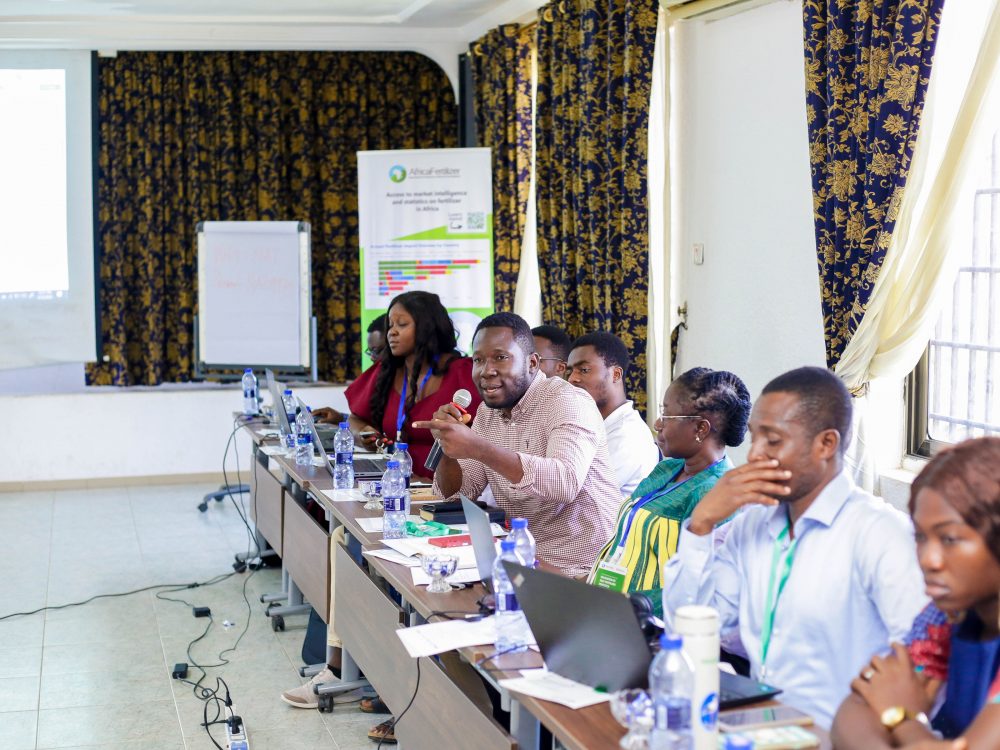
Case Study: Fostering Sustainable Agriculture through Data-Driven Collaboration and Partnership: Ethiopia, Mozambique, and Nigeria
Through DG’s Visualizing Insights on Fertilizer for African Agriculture (VIFAA) program, we recently published a case study titled “Fostering Sustainable Agriculture through Data-Driven Collaboration and Partnership: Ethiopia, Mozambique, and Nigeria.” It dives deep into how the VIFAA program has impacted the fertilizer data and markets in Ethiopia, Mozambique, and Nigeria. In this blog, we explore the overall impact that the VIFAA program is making, why the program was needed, and offer some key highlights from the case study.
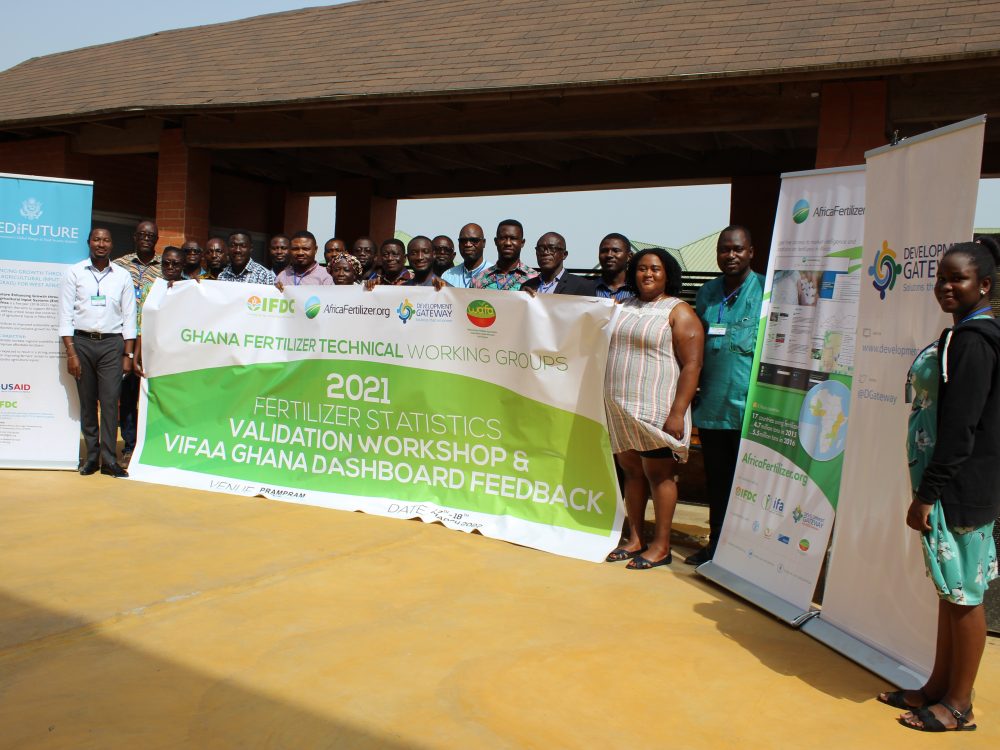
Fertilizer Technical Working Groups Provide Key Insights into Africa’s Fertilizer Sector
From June 2021 to September 2022, Development Gateway: An IREX Venture’s (DG’s) Visualizing Insights on Fertilizer for African Agriculture (VIFAA) program convened 12 Fertilizer Technical Working Groups in 14 countries which have yielded essential information on Africa’s fertilizer sector, including insights on how geopolitical events have impacted the fertilizer sector and what is needed to mitigate resulting threats to food security throughout Africa.
Advancing Tobacco Control in Zambia: The TCDI Website
In response to the impending threat of tobacco use in Zambia and the various dangers that accompany it, the Tobacco Control Data Initiative website creates a “one-stop shop” to access the relevant data that Zambia’s policymakers need to advance tobacco control legislation.
December 14, Lusaka, Zambia – Since 2019, Development Gateway: an IREX Venture (DG) has collaborated with University of Cape Town’s Research Unit on the Economics of Excisable Products (REEP) to address barriers to data use in tobacco control by consolidating available and trusted tobacco control data, identifying and filling data gaps, and creating an online resource for policymakers to access the relevant data needed to pass and monitor tobacco control legislation. These findings have come together through the Tobacco Control Data Initiative (TCDI), which is supported in partnership with the Bill & Melinda Gates Foundation and implemented in Zambia in addition to South Africa, Kenya, Ethiopia, Nigeria, and the Democratic Republic of the Congo.
Why TCDI?
More than 7,000 Zambians die every year as a result of using tobacco, and 60% of these individuals are below 70 years of age (MOH. “Investment Case For Tobacco Control in Zambia: The Case for Investing in WHO FCTC Implementation.” 2019). Tobacco consumption is decreasing throughout the world; however, the largest expected increase of smokers is expected to occur in Africa (Africa’s Tobacco Epidemic, Tobacco Tactics, 2020). This is particularly alarming, because tobacco control data in Zambia is scarce and incomprehensive with minimal disaggregation.
Although tobacco control data exist, the data is usually only available in disparate sources (i.e., individual agencies, research institutions, private sector companies, or civil society organizations) and some data is not easily accessible. These factors present a challenge for tobacco control legislation. Strong tobacco control measures are needed to ensure that smoking rates do not increase.
Through their research, the TCDI team identified common themes in the data landscape. These relate to concerns about data accuracy, comparability, timeliness, and accessibility. As a result, the TCDI team understands the data needs and gaps, has identified existing data, and developed the TCDI Zambia website that enables decision-makers to use essential data to inform tobacco control policy more effectively.
The Zambia Website
Together, partners co-designed a publicly available website (zambia.tobaccocontroldata.org) that aims to address key decision-making needs. The website equips stakeholders in government, civil society, academia, and the general public with reliable and up-to-date evidence to promote tobacco control and public health. It draws on both primary and secondary data sources and presents tobacco control information in user-friendly formats such as graphs, infographics, myths and facts, and success stories. The website will feature five themes: tobacco prevalence, tobacco harm, illicit trade, taxation, and industry interference. The website will be updated with new information as this becomes available over the course of the program.
The Development Process
Before creating the TCDI Zambia website, the TCDI team assessed the existing data and stakeholder needs through hour-long interviews with key members of the tobacco control community. The learnings from the assessment were validated with stakeholders during a workshop in February 2022 before technical development proceeded. The website was created through an agile, co-design process in close consultation with key tobacco control stakeholders in Zambia, including Zambia’s Ministry of Health. (Find the full list of our stakeholders and partners here.) Initial mockups and website designs were shared back with stakeholders for their input and suggestions. As a final step before launching the site, user feedback sessions were led in November 2022.
Development Gateway: an IREX Venture (DG)
Development Gateway: an IREX Venture provides data and digital solutions for international development. DG creates tools that help institutions collect and analyze information; strengthen the institutional capacity to use data; and explore what processes are needed to enable evidence-based decisions. A mission-driven nonprofit since 2000 with staff based in five global hubs and around the world, DG supports the use of data, technology, and evidence to create more effective, open, and engaging institutions. More at www.developmentgateway.org.
Ministry of Health, Zambia (MOH)
The Ministry aims to provide effective quality healthcare services close to the family as possible. This ensures equity of access to health service delivery and contributes to human and socioeconomic development. The ministry also targets to attain Sustainable Development Goals on health and other national health priorities. More at www.moh.gov.zm.
Other Partners
- Breathe Life Zambia
- Center for Primary Care Research (CPCR)
- Campaign for Tobacco-Free Kids (CFTK)
- Centre for Trade Policy and Development (CFTK)
- Tobacco Free Association of Zambia (TOFAZA)
- University of Cape Town Research Unit on the Economics of Excisable Products (UCT REEP)
- World Health Organization (WHO)
- Zambia Youth Alliance
- Youth Cultural Promotion Association (YOCUPA) – 7 Aside – ASHAGs
- Zambia Agriculture Research Institute (ZARI)
- Zambian Cancer Society
- Zambia Consumer Association (ZACA)
- Zambia Revenue Authority (ZRA)
Share
Related Posts

The Cancer-Tobacco Link: Using Data to Drive Stronger Tobacco Control Policies
As we observe World Cancer Day today, it is crucial to recognize the significant role smoking plays in the global cancer epidemic. Tobacco use is the leading preventable cause of cancer and cancer-related deaths worldwide, necessitating a dynamic, multidisciplinary approach to tobacco control interventions. DG’s Tobacco Control Data Initiative (TCDI) contains country-specific websites designed to

Stakeholder, Where Art Thou?: Three Insights on Using Governance Structures to Foster Stakeholder Engagement
Through our Tobacco Control Data Initiative (TCDI) program and its sister program Data on Youth and Tobacco in Africa (DaYTA), we have learned that creating governance structures, such as advisory boards or steering committees, is one approach to ensuring that digital solutions appropriately meet stakeholders’ needs and foster future stakeholder engagement. In this blog, we explore three insights on how governance structures can advance buy-in with individual stakeholders while connecting them to one another.

Raising Awareness on World No Tobacco Day 2024: DaYTA/TCDI’s Work on Tobacco Industry Interference
As tobacco companies have aggressively deployed creative strategies to market retail nicotine and tobacco products at children and adolescents, it is imperative that tobacco control stakeholders have access to timely and high-quality data to inform robust policies, regulations, and enforcement mechanisms.




